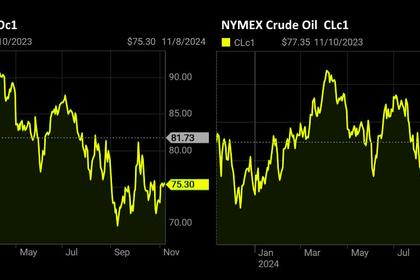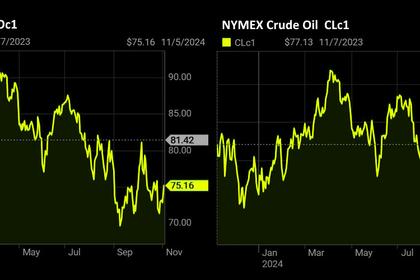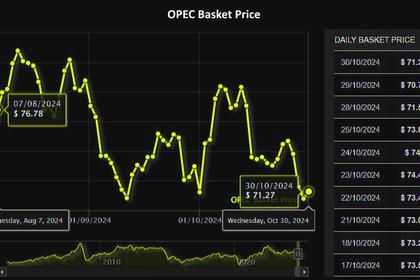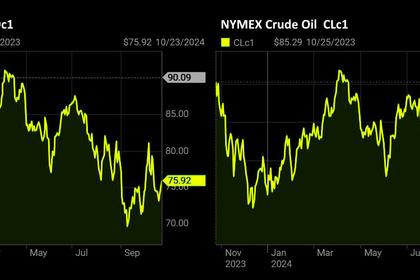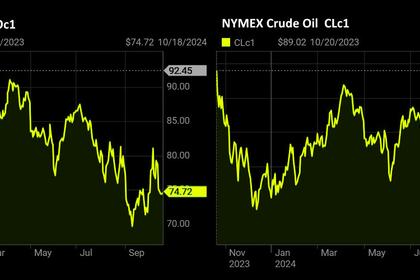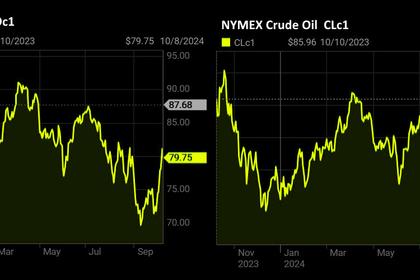
OIL PRICE: BRENT NEAR $72, WTI NEAR $68

REUTERS - Nov 14, 2024 - Oil prices slipped in early trade on Thursday, reversing most of the previous session's gains, weighed down by worries of higher global production amid slow demand growth, with a firmer dollar exacerbating the declines.
Brent crude futures fell 35 cents, or 0.5%, to $71.93 a barrel by 0400 GMT. U.S. West Texas Intermediate crude (WTI) futures declined 42 cents, or 0.6%, to $68.01.
"Oil is tackling the (earlier) weaker demand forecast narrative by OPEC, who deferred rolling back additional production for yet another month, fearing the adverse effect on prices," said Phillip Nova's senior market analyst Priyanka Sachdeva in an email.
On Tuesday, the Organization of the Petroleum Exporting Countries cut its global oil demand growth forecast to 1.82 million bpd in 2024, down from 1.93 million bpd forecast last month, on weak demand in China, India and other regions, sending oil prices to their lowest in nearly two weeks.
Meanwhile, the U.S. Energy Information Administration has slightly raised its expectation of U.S. oil output to an average 13.23 million barrels per day this year, or 300,000 bpd higher than last year's record 12.93 million bpd, and up from 13.22 million bpd forecast earlier.
The agency also raised its global oil output forecast for 2024 to 102.6 million bpd, from its prior forecast of 102.5 million bpd. For next year, it expects world output of 104.7 million bpd, up from 104.5 million bpd previously.
The EIA's oil demand growth forecasts are weaker than OPEC's, at about 1 million bpd in 2024, although that is up from its prior forecast of about 900,000 bpd.
Market participants are now waiting for the International Energy Agency's oil market report, due later in the day, and the EIA's U.S. crude oil and product stockpile data for further trading cues.
Concerns about China's demand remains a key contributor to softening prices, analysts say.
"Despite various stimulus measures implemented by Chinese authorities, there has been little to no improvement in economic activity or sentiment within mainland China," said Phillip Nova's Sachdeva.
China continues to be the “sore joint” for oil demand and the primary reason why oil markets are bracing for an oversupply in 2025, she added.
-----
Earlier:
